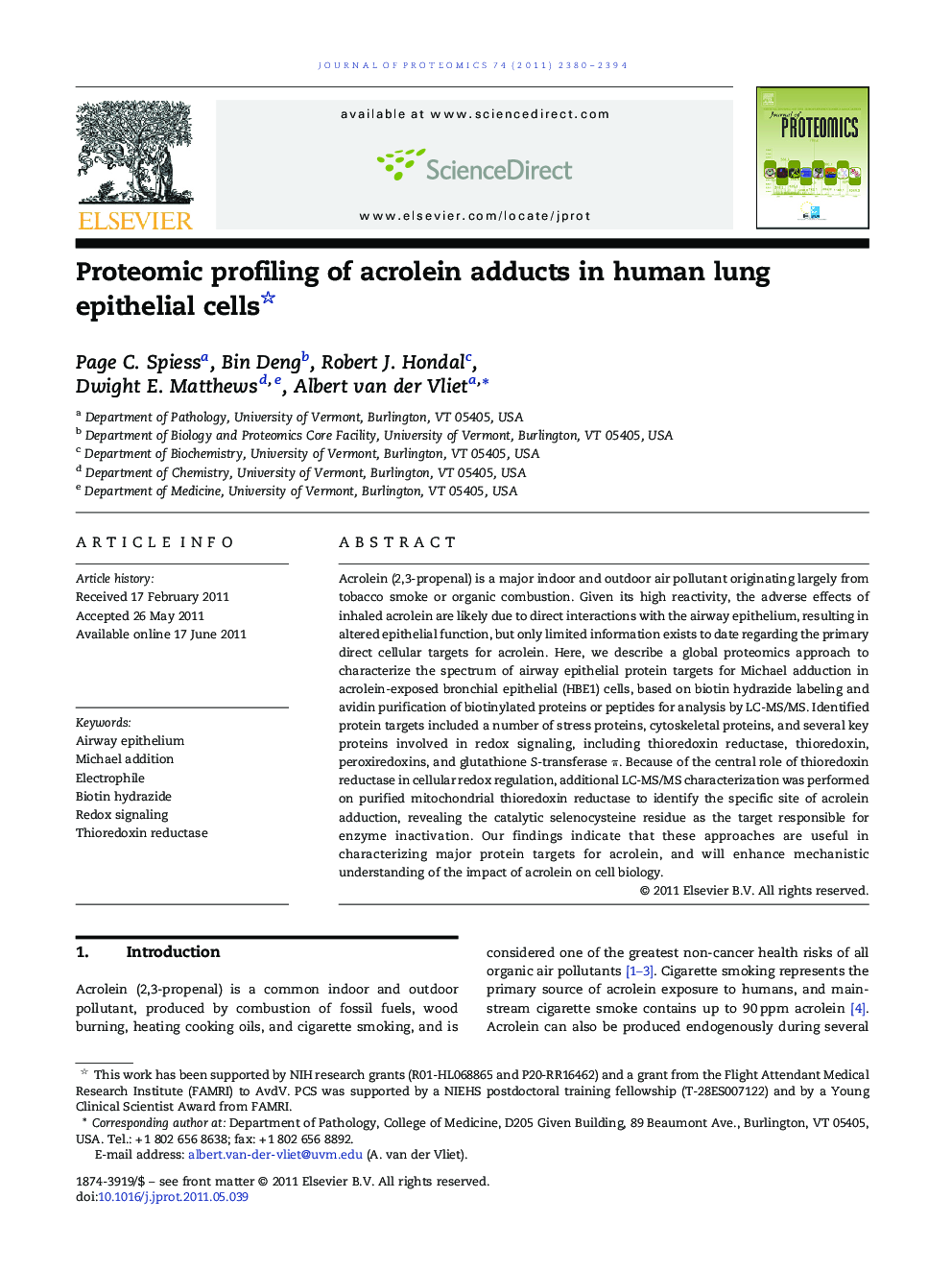| Article ID | Journal | Published Year | Pages | File Type |
|---|---|---|---|---|
| 1225409 | Journal of Proteomics | 2011 | 15 Pages |
Acrolein (2,3-propenal) is a major indoor and outdoor air pollutant originating largely from tobacco smoke or organic combustion. Given its high reactivity, the adverse effects of inhaled acrolein are likely due to direct interactions with the airway epithelium, resulting in altered epithelial function, but only limited information exists to date regarding the primary direct cellular targets for acrolein. Here, we describe a global proteomics approach to characterize the spectrum of airway epithelial protein targets for Michael adduction in acrolein-exposed bronchial epithelial (HBE1) cells, based on biotin hydrazide labeling and avidin purification of biotinylated proteins or peptides for analysis by LC-MS/MS. Identified protein targets included a number of stress proteins, cytoskeletal proteins, and several key proteins involved in redox signaling, including thioredoxin reductase, thioredoxin, peroxiredoxins, and glutathione S-transferase π. Because of the central role of thioredoxin reductase in cellular redox regulation, additional LC-MS/MS characterization was performed on purified mitochondrial thioredoxin reductase to identify the specific site of acrolein adduction, revealing the catalytic selenocysteine residue as the target responsible for enzyme inactivation. Our findings indicate that these approaches are useful in characterizing major protein targets for acrolein, and will enhance mechanistic understanding of the impact of acrolein on cell biology.
Graphical abstractFigure optionsDownload full-size imageDownload high-quality image (66 K)Download as PowerPoint slideHighlights► Acrolein (2,3-propenal) is an important environmental pollutant that directly targets proteins by Michael adduction. ► Protein adducts of acrolein were characterized in airway epithelial cells using biotin hydrazide derivatization. ► Acrolein most commonly adducted epithelial proteins on cysteine residues. ► Major targets for acrolein include cytoskeletal proteins and proteins involved in stress responses and redox regulation. ► Alkylation of thioredoxin reductase occurs primarily on its selenocysteine residue and results in loss of activity.
